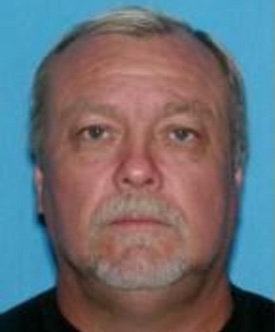Summary
In February 1979, the body of a young female was found off Highway 243 south of Poppet Flats Road near Banning, California. Banning is located in Riverside County. Investigators determined that the body was that of 17-year-old Esther Gonzalez. Esther was attacked and murdered while walking from her parents’ home in Beaumont to her sister’s home in nearby Banning. According to investigators, she had been raped and bludgeoned to death.
Esther’s body was found after an unidentified man called the Riverside County Sheriff’s Station in Banning to report finding a body. Deputies described the male caller as being argumentative, and he did not know if the body was that of a male or female. Five days later, sheriff’s investigators were able to identify the caller as Lewis Randolph “Randy” Williamson. Williamson was asked to take a polygraph test to which he agreed. Williamson passed the polygraph, leading investigators to clear him of any involvement in the crime.
Investigators continued to work on this case for years and eventually a DNA profile was developed from a semen sample recovered at the crime scene. This profile was entered into the Combined DNA Index System (CODIS). The CODIS search did not yield a match to a known individual. For 45 years, the identity of the person responsible for Esther Gonazalez’s rape and murder could not be identified.
In 2023, the Riverside County Regional Cold Case Homicide Team (RCCHT), which is comprised of members of the DA’s Office Bureau of Investigation, the Riverside County Sheriff-Coroner Department, the FBI, and the Riverside Police Department, once again partnered with Othram to use advanced DNA testing and forensic genetic genealogy to generate new leads in the case. Previously, RCCHT and Othram worked together to identify murder victim Juana Rosas-Zagal, as well as individuals in other unsolved cases.
 Forensic DNA evidence in Esther's case was sent to Othram and Othram scientists used Forensic-Grade Genome Sequencing® to build a comprehensive genealogical profile. After successfully developing the DNA profile, it was returned to law enforcement investigators who used the profile in a forensic genetic genealogical search. The investigation led back to Lewis Randolph “Randy” Williamson–who died in Florida in 2014. Although he was initially cleared of the crime by polygraph in 1979, he was never cleared through DNA testing, as the technology to do so had not been developed at the time. With the assistance of the Broward County Sheriff’s Office in Florida, a blood sample collected during Williamson’s autopsy was sent to the California Department of Justice’s laboratory, where it was confirmed that Williamson’s DNA matched the DNA recovered from Esther Gonzalez’s body.
Forensic DNA evidence in Esther's case was sent to Othram and Othram scientists used Forensic-Grade Genome Sequencing® to build a comprehensive genealogical profile. After successfully developing the DNA profile, it was returned to law enforcement investigators who used the profile in a forensic genetic genealogical search. The investigation led back to Lewis Randolph “Randy” Williamson–who died in Florida in 2014. Although he was initially cleared of the crime by polygraph in 1979, he was never cleared through DNA testing, as the technology to do so had not been developed at the time. With the assistance of the Broward County Sheriff’s Office in Florida, a blood sample collected during Williamson’s autopsy was sent to the California Department of Justice’s laboratory, where it was confirmed that Williamson’s DNA matched the DNA recovered from Esther Gonzalez’s body.
The Riverside County Regional Cold Case Homicide Team now asks that anyone who knew Williamson or may have information about Esther’s case or other potential victims, call (951) 955-2777 or email: ColdCaseUnit@RivcoDA.org.
The identification of Esther Gonzalez's killer represents the 50th publicly-announced case in the State of California where officials have utilized technology developed by Othram to solve a case. Visit DNASolves to learn about other California cases.
